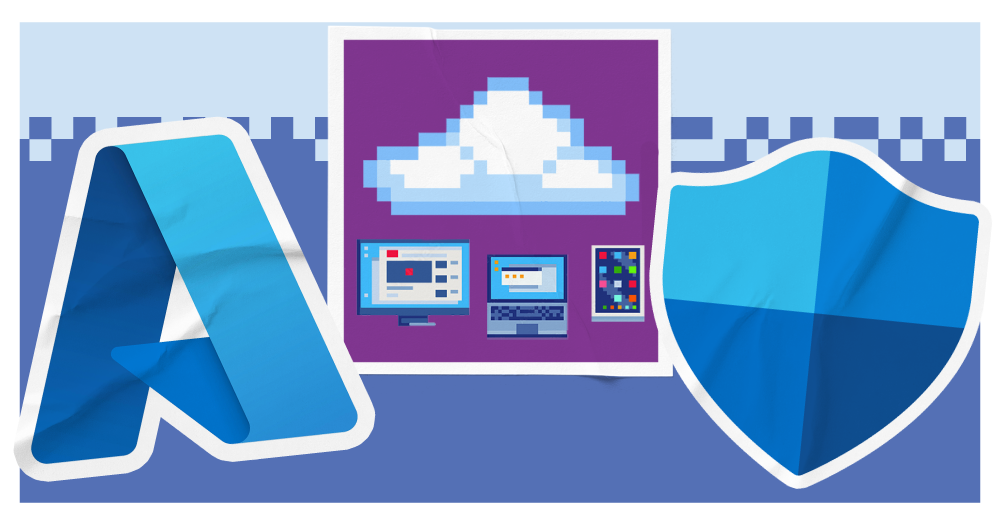The shift to cloud computing has transformed how organisations store, manage and protect their data. But with this transformation comes a new set of challenges – particularly around data security.
In the cloud era, traditional security models no longer apply. Data is more distributed, access is more complex and the risks are more dynamic. That’s why cloud computing and data security must go hand in hand. It means you move to the cloud, securely, strategically and with full visibility.
In this blog, we’ll explore how to prepare your data and security posture for the cloud: answering key questions, addressing common pitfalls and sharing expert insights to help you build a resilient, future-ready foundation.
The cloud computing landscape: opportunities and risks_
Cloud computing has become the foundation of modern digital infrastructure, enabling organisations to scale rapidly, innovate faster and reduce capital expenditure. Key benefits of moving to the cloud include:
- Scalability on demand: Instantly scale resources up or down based on business needs, without the constraints of physical infrastructure
- Agility and speed to market: Get rapid provisioning of environments, accelerating your business development cycles and unleashing innovation
- Cost optimisation: Instead of buying expensive hardware upfront, cloud lets you pay monthly only for what you use, saving on equipment, maintenance and energy costs
- Global reach: Deploy applications and services closer to users, allowing you to improve performance and compliance with regional data laws
But alongside the rewards of cloud computing, there are risks you need to address with the cloud.
Risks and misconceptions of cloud computing_
1. The illusion of built-in security
Many organisations assume cloud platforms are secure by default. Most providers offer robust infrastructure security – but data protection, access control and compliance remain the customer’s responsibility. Misconfigurations (like open storage buckets or overly permissive IAM roles) are among the most common causes of cloud breaches.
2. Hybrid and multi-cloud complexity
Most enterprises operate in hybrid or multi-cloud environments. This introduces:
- Inconsistent security policies across platforms
- Visibility gaps in monitoring and threat detection
- Increased attack surfaces, especially when legacy systems are connected to cloud-native services
3. Shadow IT and unmanaged risk
Employees often adopt cloud tools without IT oversight. This is known as shadow IT. These unsanctioned apps can bypass corporate security controls, leading to data leakage, compliance violations and unmonitored access points.
4. Data sovereignty and regulatory pressure
With data stored across global regions, organisations must navigate a complex web of data residency laws and cross-border transfer restrictions. Failing to comply with regulations like GDPR or industry-specific mandates can result in significant penalties and reputational damage.
The unique features and challenges of the cloud have significantly changed cyber security. In traditional IT, security was perimeter-based, with firewalls, VPNs and network segmentation protecting a centralised environment.
In the cloud, the perimeter is fluid. Users access data from anywhere, on any device, across multiple services. This shift demands a new approach to cyber security – and specifically, data security.
What is cloud data security?
Given the new risks, it’s crucial to protect your data in a cloud environment. Cloud data security refers to the strategies and technologies used to do this. It includes safeguarding data in transit (as it moves across networks), at rest (when stored in cloud systems) and in use (when actively accessed or processed).
Key components of cloud data security include:
- Encryption: Scrambles data so it’s unreadable without the correct key – essential for both storage and transmission
- Access controls: Ensures only authorised users can view or modify data, often using role-based permissions
- Identity management: Verifies user identities and enforces multi-factor authentication (MFA)
- Compliance monitoring: Tracks and enforces adherence to regulations like GDPR and ISO 27001
How does cloud security differ to traditional security?
Unlike traditional (on-premises) security, which relies on perimeter defences, cloud-native security is:
- Distributed: Protects data across multiple locations and services
- Dynamic: Adapts to real-time threats and user behaviour
- Integrated: Built into cloud platforms with automated monitoring and response capabilities
Legacy tools often struggle to keep up with the speed and complexity of cloud environments, making cloud-native solutions essential. Cloud-native solutions can there be more secure – if configured correctly.
Cloud providers offer advanced security features, but misconfigurations and poor access controls are common causes of breaches. Security depends on how well the organisation manages its responsibilities.
Preparing your data for the cloud (securely)_
Migrating to the cloud isn’t just a technical exercise; it’s a strategic opportunity to strengthen your data security posture. Before any migration begins, your data must be assessed, cleaned and structured with security and compliance in mind.
1. Classify your data_
Start by identifying what data you hold and how sensitive it is. Classifying data (whether it’s public, internal, confidential or regulated) helps determine the level of protection required in the cloud. This is essential for applying the right encryption, access controls and compliance policies.
2. Cleanse and tag your data_
Data hygiene reduces risk. Clean, well-organised data is easier to monitor, audit and protect, reducing the chance of accidental exposure or misconfiguration.
Remove duplicates, outdated records and irrelevant files. Apply metadata and tags to improve visibility and control once the data is in the cloud.
3. Plan a secure data migration strategy_
A secure migration prevents data leaks during transit and ensures business continuity if anything goes wrong.
Choose a migration model that suits your business and security needs, whether it’s lift-and-shift or a full rearchitecture. Use secure transfer protocols (like TLS or private endpoints) and ensure you have backup and rollback plans in place.
You can learn about preparing for a cloud migration here.
Building a resilient cloud security framework_
As organisations shift to cloud-first strategies, security must evolve from static, perimeter-based models to dynamic, identity-driven frameworks. A resilient cloud security posture must be built on an ecosystem of principles, technologies and processes designed to protect data in a constantly changing environment.
Some components to consider include:
Zero Trust_
In cloud environments, the traditional notion of a secure perimeter no longer applies. Zero Trust architecture assumes no user, device or service is trustworthy, whether inside or outside the network. Every access request is verified explicitly, and permissions are granted based on least privilege.
This approach is especially critical in cloud ecosystems where users access data from multiple locations, devices, and platforms.
Identity governance and multi-factor authentication_
With people, data and systems no longer based from one location, identity is the new perimeter.
Strong identity and access management (IAM) ensures that only authorised users can access sensitive data. Multi-factor authentication (MFA) adds an extra layer of protection, reducing the risk of credential theft and unauthorised access.
Effective identity governance also helps enforce compliance, manage user roles and detect anomalies in access patterns.
Real-time monitoring and threat detection_
Cloud environments require continuous visibility. Tools like Security Information and Event Management (SIEM) and Extended Detection and Response (XDR) provide real-time monitoring, correlation of security events and automated threat response.
These systems help detect suspicious behaviour early, before it escalates into a breach.
Incident response for cloud-native threats_
A resilient framework includes a well-defined incident response plan tailored to cloud-native threats. This means:
- Knowing how to isolate compromised workloads
- Having automated playbooks for containment and recovery
- Ensuring logs and forensic data are available for post-incident analysis
Cloud breaches can unfold rapidly and preparedness is key to minimising impact.
AI and automation_
Modern cloud security is increasingly powered by AI and automation. Machine learning models can detect anomalies, predict threats and trigger automated responses faster than human teams ever could.
Automated policy enforcement, self-healing infrastructure and intelligent access controls are now becoming increasingly normal – and can be critical for cloud protection.
Compliance and governance in the cloud_
As organisations move sensitive data and workloads to the cloud, maintaining compliance with regulatory frameworks becomes more complex, but also more achievable with the right strategy and tools.
Whether you’re governed by GDPR, ISO 27001 or industry-specific standards, cloud platforms offer built-in tools to help meet these requirements. However, compliance is not automatic. You must configure services correctly, manage data residency and ensure policies are enforced consistently across environments.
Understanding the shared responsibility model_
One of the most critical concepts in cloud governance is the shared responsibility model. Cloud providers secure the infrastructure (data centres, hardware and core services) but you are responsible for securing your data, identities and configurations.
Misunderstanding this model is a leading cause of cloud misconfigurations and compliance failures, so understand what you need to cover and what your cloud provider will take care of.
Auditing and reporting_
Modern cloud platforms offer advanced auditing and reporting tools that provide visibility into data access, configuration changes and security events. These tools are essential for:
- Proving compliance during audits
- Detecting policy violations
- Maintaining accountability across teams and services
Integrating these tools with SIEM or governance platforms can help automate reporting and reduce risk.
How to ensure compliance_
To maintain compliance across AWS, Azure, Google Cloud or hybrid environments, you should:
- Standardise policies using cloud-agnostic governance frameworks.
- Automate enforcement with tools like Azure Policy, AWS Config or third-party platforms.
- Centralise monitoring through unified dashboards and cross-cloud SIEM solutions.
- Regularly audit configurations and access controls to catch drift or misalignment.
The key is consistency: compliance must be embedded into your cloud architecture, not bolted on after deployment.
What to do now: your checklist_
Ready to secure your data in the cloud? Here’s a checklist covering every best practice:
1. Classify your data
- Identify sensitive, regulated and business-critical data.
- Map to compliance requirements (e.g. GDPR).
2. Clean and prepare your data
- Remove duplicates and outdated records.
- Tag and organise for governance and visibility.
3. Plan a secure migration
- Choose the right migration model.
- Use encrypted transfer protocols and backup plans.
4. Adopt Zero Trust principles
- Verify every access request.
- Enforce least privilege and continuous authentication.
5. Strengthen identity controls
- Implement multi-factor authentication (MFA).
- Use role-based access and monitor identity behaviour.
6. Monitor in real time
- Deploy SIEM or XDR tools for threat detection.
- Automate alerts and responses where possible.
7. Build an incident response plan
- Define cloud-native breach scenarios.
- Prepare playbooks for containment and recovery.
8. Ensure compliance
- Understand the shared responsibility model.
- Use cloud-native tools for auditing and reporting, like Azure Policy.
Get ready for a secure cloud environment_
Cloud computing offers immense potential, but only if your data and security strategies are built to match. From classification and migration to identity governance and real-time threat detection, securing your cloud environment requires a proactive, layered approach.
As threats evolve and technologies advance, staying ahead means more than just reacting; it means preparing strategically, embedding security into every decision and leveraging the right expertise.
Whether you’re planning your first migration or optimising a mature cloud estate, now is the time to act. And our cloud experts are here to help.
They can work with you assess your current posture, identify gaps and build a resilient framework tailored to your organisation. Book a no-obligation discovery call today.




